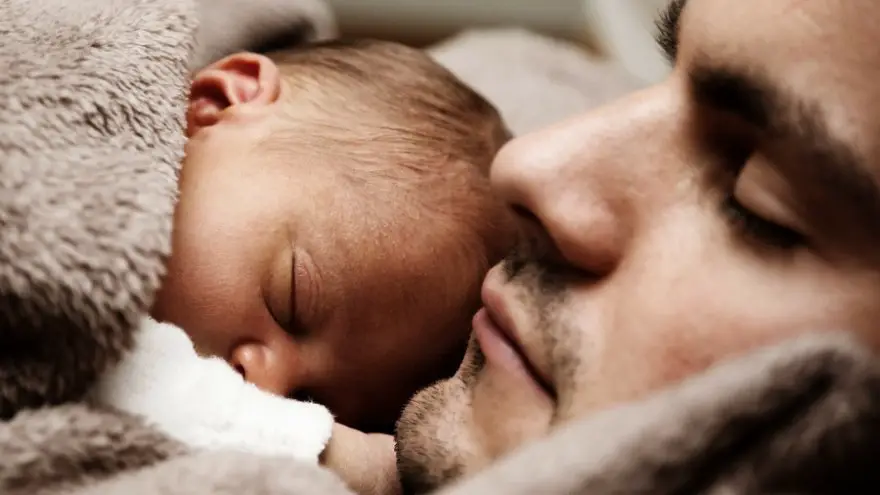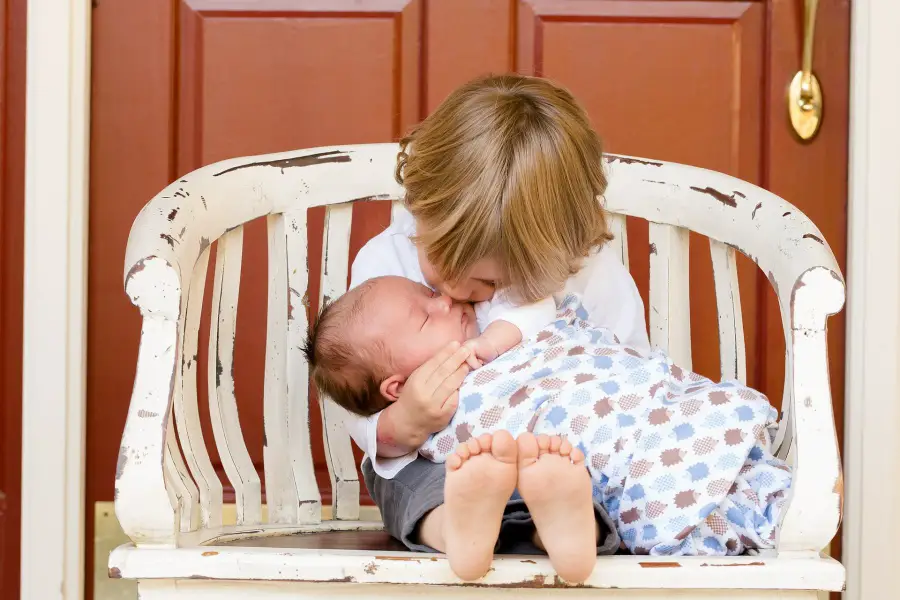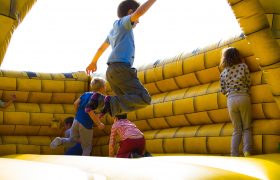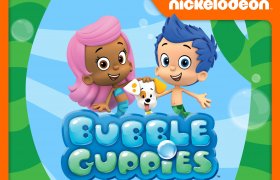Simple Exercises for First 3 Months of your Baby’s Life

When you bring your new baby home it’s tempting to spend a lot of time just staring in awe of the little person you’ve invited into your house. As they grow they begin to develop an awareness of themselves and then the real fun begins. Helping your baby learn to the ropes is half the fun of parenting. It’s never too early to start exercising and with your help, your baby can learn new things about their body and how it works with a few simple games.
In the first 3 months of your baby’s life, they will begin to become aware of their body and start to learn to move their body to interact with their environment. You can help them practice these new moves by engaging in games that exercise not just their body but their minds and help them make connections between their movements and the effects those movements have.
There are many developmental milestones reached by 3 months of age, but they don’t happen overnight. Every success happens after plenty of experimentation and you can help your child on this pathway too.
Exercise the eyes
Your baby is quickly developing a lot more awareness of the world around them and their eyes are beginning to cooperate with tasks like tracking. Tracking is the ability to sustain attention on a moving object. If you use your finger to move slowly back and forth you’ll start to notice your baby following along with their eyes.
Early on you may want to start just with your finger, moving it slowly in patterns and then finally “landing” somewhere like on their belly or arm, giving them a chance to track you. You may find that after a few tries your baby will start to predict where you will eventually land and will be excited when they are right.
If you want to change it up, add some sound. Make a few shakers or rattles and shake them where your baby can see at first, then sneak them around to either side or even behind them and let them search out the sound. You may find your baby really loves this game.
Tummy time
It may seem like a newborn doesn’t do much aside from sleeping, eating, cuddling, and crying but small changes are going on in their brains that will lead to physical skills that they are acquiring. While you should always lay your baby on their back at this age to sleep, it’s also a great idea to establish some tummy time during the day so they can work on learning to lift their head and eventually be able to push up on their arms while on their stomach. Tummy time can be short at first, maybe even just 5 or 10 minutes if that’s all your baby will tolerate but as they grow tummy time will extend out for them and become very fun.
 To start out you may want to lay your baby on your stomach, tummy to tummy and then gently talk to them and say their name. This may motivate them to try to lift their head to look at you. As your baby gets really good at turning to look at you and lifting their head a little it can be fun to lay with them in the floor on a blanket and put toys in front of them to encourage them to lift their head some more and finally they will be able to lift their chest off the ground by pushing up on their arms.
To start out you may want to lay your baby on your stomach, tummy to tummy and then gently talk to them and say their name. This may motivate them to try to lift their head to look at you. As your baby gets really good at turning to look at you and lifting their head a little it can be fun to lay with them in the floor on a blanket and put toys in front of them to encourage them to lift their head some more and finally they will be able to lift their chest off the ground by pushing up on their arms.
Hands-on fun
When you brought your baby home they had a reflex called the Palmar grasp reflex. Babies are born with this reflex and it’s even been seen in ultrasound while babies are still in utero. It causes them to grasp anything that touches their palm, this is why a newborn will grab your finger if you put it in their hand. As your baby grows they will move on from just reflexively grabbing things that touch their hands onto grasping things with purpose. During the first three months, you can help your baby establish this skill by helping them learn to grasp things when they want to.
With your baby on their back place a toy near their hand and let them grasp it. When they drop it switch hands and try again. Letting your baby grasp different shapes and textures of toys will not only strengthen their grasp but the sensory fun of different textures also helps them make more connections about the world around them.
Give your baby some batting practice by dangling soft toys over them while they’re on their back and letting them bat at them and hit them. For added fun make sure the toys are different colors and textures, to give the baby some interesting experiences.
All about the feet
Babies often move their feet when excited at this stage in life. You know if you give your baby a little tickle their little feet go wild with excitement. It’s definitely a cute bonus in addition to those first tiny baby giggles. Babies are becoming more aware of their bodies in the first three months and that includes their feet. To help your baby get the most out of their new found feet friends, play around a little bit with them.
Put your baby on their back and do some exercises with them like bicycling their legs, or giving them a stable hand to push their feet into. Feel free to add a little excitement by putting on socks with bells so they can hear a little jingle when they get kicky. Remember to remove any choking hazards from your baby’s reach, including small bells when you’re not actively interacting with them.
Remember that it’s always better to take a 10-minute break to play every day than to try to do a longer session irregularly. You don’t need to do every game every time, just switch it up. Take your time to play with your baby and note their reactions and keep a journal of their progress. If you feel that your baby is not progressing speak to your pediatrician about your concerns.







